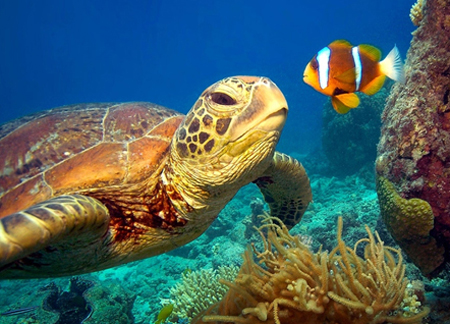The oceans occupy huge regions of the earth's surface, and their boundaries are usually established by continental land masses and ridges in the floor or bottom of the oceans.
2. The entire body of salt water that covers more than 70 percent of the earth's surface: In science class, Greg learned about different oceans and that they covered a lot of the earth's outermost layer.3. A vast amount or immense expanse of something, or an apparently unlimited space or quantity: As they drove back home, Jack and Jill saw an ocean of corn fields.

The polar climate is characterized by persistent cold and relatively narrow annual temperature ranges; winters characterized by continuous darkness, cold and stable weather conditions, and clear skies; summers characterized by continuous daylight, damp and foggy weather, and weak cyclones with rain or snow.
The Kiel Canal (Germany), Oresund (Denmark-Sweden), Bosporus (Turkey), Strait of Gibraltar (Morocco-Spain), and the Saint Lawrence Seaway (Canada-US) are important strategic access waterways.
The decision by the International Hydrographic Organization in the spring of 2000 to delimit a fifth world ocean, the Southern Ocean, removed the portion of the Atlantic Ocean south of 60 degrees south latitude.
The Atlantic Ocean provides some of the world's most heavily trafficked sea routes between and within the Eastern and Western Hemispheres.
Other economic activities include the exploitation of natural resources, such as fishing, dredging of aragonite sands (The Bahamas), and production of crude oil and natural gas (Caribbean Sea, Gulf of Mexico, and North Sea).
Four critically important access waterways are the Suez Canal (Egypt), Bab el Mandeb (Djibouti-Yemen), Strait of Hormuz (Iran-Oman), and Strait of Malacca (Indonesia-Malaysia).
The decision by the International Hydrographic Organization in the spring of 2000 to delimit a fifth ocean, the Southern Ocean, removed the portion of the Indian Ocean south of 60 degrees south latitude.
The Indian Ocean floor is dominated by the Mid-Indian Ocean Ridge and subdivided by the Southeast Indian Ocean Ridge, Southwest Indian Ocean Ridge, and Ninetyeast Ridge.
The rate of ocean mixing affects the extent to which carbon dioxide is exchanged between the atmosphere and the oceans.
Strategically important access waterways include the La Perouse, Tsugaru, Tsushima, Taiwan, Singapore, and Torres Straits. The decision by the International Hydrographic Organization in the spring of 2000 to delimit a fifth ocean, the Southern Ocean, removed the portion of the Pacific Ocean south of 60 degrees south.
Surface currents in the northern Pacific are dominated by a clockwise, warm-water gyre (broad circular system of currents) and in the southern Pacific by a counterclockwise, cool-water gyre.
In the northern Pacific, sea ice forms in the Bering Sea and the Sea of Okhotsk in winter; in the southern Pacific, sea ice from Antarctica reaches its northernmost extent in October. The ocean floor in the eastern Pacific is dominated by the East Pacific Rise, while the western Pacific is dissected by deep trenches, including the Mariana Trench, which is the world's deepest.
Endangered marine species include the dugong, sea lion, sea otter, seals, turtles, and whales.
The region where the cold waters of the ACC meet and mingle with the warmer waters of the north defines a distinct border (the Antarctic Convergence) which fluctuates with the seasons, but which encompasses a discrete body of water and a unique ecologic region.
The Convergence concentrates nutrients, which promotes marine plant life, and which in turn allows for a greater abundance of animal life.
In the spring of 2000, the International Hydrographic Organization decided to delimit the waters within the Convergence as a fifth world ocean, or the Southern Ocean, by combining the southern portions of the Atlantic Ocean, Indian Ocean, and Pacific Ocean.
The Southern Ocean extends from the coast of Antarctica north to 60 degrees south latitude, which coincides with the Antarctic Treaty Limit and which approximates the extent of the Antarctic Convergence.
As such, the Southern Ocean is now the fourth largest of the world's five oceans (after the Pacific Ocean, Atlantic Ocean, and Indian Ocean, but larger than the Arctic Ocean). It should be noted that the inclusion of the Southern Ocean does not imply recognition of this feature as one of the world's primary oceans by the U.S. Government.
- An Introduction to the Biology of Marine Life by James L. Sumich; Wm. C. Brown Publishers; Dubuque, Iowa; 1988.
- Marine Ecology by Jeffrey S. Levinton; State University of New York at Stony Brook; Prentice-Hall Inc.; Englewood Cliffs, New Jersey; 1982.
- The Silent Deep by Tony Koslow; The University of Chicago Press; Chicago; 2007.

Two animals are swimming in an ocean environment.
